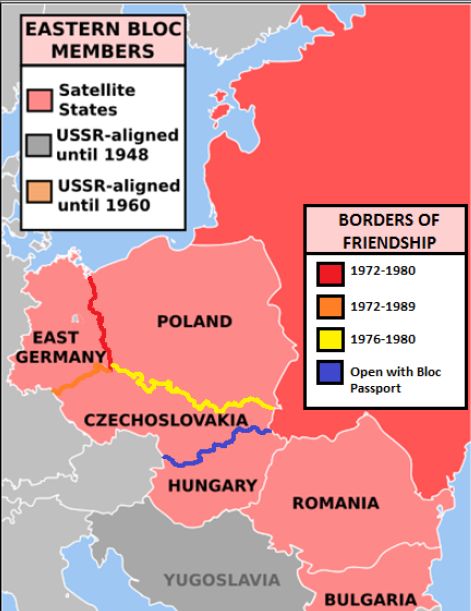Travel Regulations for East German Citizens
On the 15th December 1952 travel regulations stated that freedom to travel for individuals within the DDR was limited to a range of 100 km without prior authority.
The earliest DDR passports were issued in the mid-1950s. However, they were very difficult to obtain and only a small percentage of citizens was in possession of a passport. Even by 1989, it was reported that only 25% of citizens had a passport.
Travel without a passport would be very risky as the Passport Act stated that, "whoever is leaving the German Democratic Republic to abroad or from abroad without authorization, or who is leaving the prescribed destinations, travel routes and travel dates and other restrictions on the trip, shall be punished with imprisonment up to three years."

An early example of a DDR passport.......image courtesy of the Passport Collector website
Following the building of the Berlin Wall and the strengthening of the Inner German Border (IGB), most East Germans were literally walled in and could only travel within the GDR or to other communist countries within the Eastern Bloc such as Poland, Czechoslovakia and Hungary.
In 1972 the "Borders of Friendship" project allowed citizens of East Germany, Poland and Czechoslovakia to cross each other's borders with only a police issued identification card. The numbers of people using this scheme rose from tens of thousands to tens of millions in a very short period.

The 'Borders of Friendship' programme meant the East German Trabant motorcar was a familiar site in Poland, Czechoslovakia and Hungary